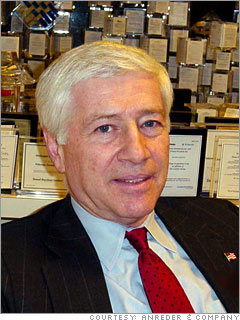Managing Director of Morgan Joseph; Then CEO of Drexel Burnham Lambert
The weekend before the crash I went bow-hunting at my farm in New Jersey with Ace Greenberg [then CEO of Bear Stearns]. When I picked him up that Friday afternoon, probably around three o'clock, one of us said to the other, "Boy, the market is going to be a disaster on Monday." And the other guy agreed and then we never talked about it again. The market was acting so badly Friday afternoon that he and I both thought this was going to carry over. That Monday morning was just astounding, but it was also a normal day. We had 10,000 people at the firm, but we were pretty tightly organized. We had an executive committee, called the coffee committee, which met every morning and included the heads of all the divisions. The head of all trading reported that there were no bids. The market was going to fall precipitously. We told our traders not to be heroes but to make markets in the stocks we needed to make markets in and answer the phone and return phone calls. Don't pretend you're not home, which some people were accused of doing during the trading break.
On Tuesday morning the Fed was calling around and asking how the firm was, and we were fine in terms of our liquidity. Positions were manageable; we simply lost some money. In those days we had other pressures that were much more serious than a market break. I would have perhaps been more concerned if we had had an air pocket in the high-yield market. The crash was really a market correction, accelerated by some of the program trading that was going on. It was a market correction of serious proportions, but it was not a once-in-1,000-years event, it was a once-in-20-years event - one you needed to anticipate. It was all within the range of risk I thought we were operating within before the crash.

